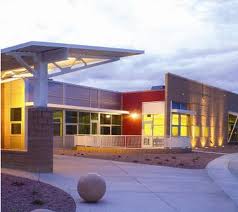Reflections on “How To Break Free from Our 19th Century Factory-Model Education”"
Two comments from readers got me thinking about the guest post by Joel Rose that I just published
The first is from Joe Nutt, former teacher and consultant in the UK:
There is a very real and very serious error underneath what so often passes for the enthusiasm of the reformers. It’s evident in this piece where the author refers to the “factory-model classroom.” The use of “factory” as a metaphor by techno-zealots and reformers, is popular but vacuous. It is just rhetoric. Any great teacher who understands what happens in any real “classroom” knows that. The classroom as learning technology (for what else is it?) is as hardy, as ancient and intransigent as the book… because it works.
That’s why designing “new classroom models” is a contradiction in terms. It’s a bit like saying designing new books. You can’t. You can write them. And before everyone yells “e-books,” they’re still books just as it’s still a classroom. (I know, I wrote one of the very first e-novels.)
One teacher, their skill and knowledge, a group of children and a readiness to learn is all any “factory-model classroom” needs to succeed. It’s ignorance about and the absence of these various elements in so many schools that is the problem. Not the lack of “innovation,” technology or new models.
The second is one from a clinical social worker in rural Maine:
Mr. Rose mentions that technology has not had “the exponential impact many anticipated, how can that be?” Well, that is because the whole issue of technology and its use in classrooms was, and continues to be, ill thought out. Learning is a step by step, time consuming process even for the brightest people. “Software that enables students to learn at their own pace” is not powerful. It is helpful and useful for some in some circumstances.
Even the idea of “designing new classroom models that take advantage of what these (technological) tools can do” misses, I think, the reality of educating a wide variety of students.
At least Mr. Rose prominently mentions a commitment to public education and appears to support the importance of public schooling to “build a common sense of national identity”. A country filled with charter schools and voucher systems can not do this.
These comments prompted the following reflections:
1. Rose ignores the history of technology-powered school reform in the U.S.
He points out that in 1983 the “federal government declared in A Nation at Riskthat our system was starting to slide.” Rose connects that date to the appearance of new technologies of Microsoft Word and the Apple IIe. What Rose didn’t point out is that reform-driven critics of U.S. schools have viewed “our system” of age-graded schools–the model imported from Prussia in the mid-19th century–as out-of-date and unequipped technologically to compete economically with other nations for decades.
Consider that in the 1890s when competitors were Britain and Germany, in the 1950s when it was the USSR, and in the 1970s when it was Japan and Germany, new technologies were invoked to deliver more, better, and faster instruction such as machine-driven vocational education at the beginning of the 20th century, instructional television in the 1950s, and the early models of the personal computer in the late-1970s. In each instance, disappointment followed. Rose omits these prior examples of reform with technologies in mind. In calling for U.S. schools to be “modernized” through new technologies, he neglects to answer the question: why have schools been the target of reform through technology repeatedly and the age-graded school has remained unreconstructed through onslaught after onslaught of reformers.
2. Age-graded schools are organizations that have plans for those who teach and learn in them.
Rose’s analysis of the age-graded school containing “factory-model classroom[s]” of 1 teacher for 25-35 students can be critiqued as Joe Nutt has done. Here’s another way of looking at Rose’s solution of delivering personalized, customized, and individualized teaching and learning to students through “a combination of in-class activities, collaborative lab periods in the evening, and online coaches … through the combination of in-class dialogue, web-based software, and online activities with students in other countries. Still others, like New Classrooms use a combination of teacher-led instruction, student collaborative activities, software, virtual instructors, and a complex scheduling algorithm to enable each student to move through an individualized learning progression at his or her own pace.”
What Rose overlooks in his prescription is that all of this occurs within the organization called the age-graded school. Brand-new buildings remain age-graded schools.
Even with projecting all of these new technology uses, schools will pursue age-graded curriculum standards. Students take tests. Students get promoted from one grade to another. Teachers still have their own classrooms. Rose fails to mention how teaching and learning are shaped by the organization of the age-graded school regardless of the ways that technology is used. He neglects to mention that the school organization socializes children and adults into community values of efficiency, work ethic, acceptance of bureaucratic values, and the like, yes, even in the School of One, Rocketship schools, and other blended programs.
While I do appreciate, as one commenter said, that Rose values the public good of tax-supported schooling, his willingness to tout the virtues of new technologies without altering the powerful organizational influences of the age-graded school undermines precisely what he yearns to happen in public schools.
This blog post has been shared by permission from the author.
Readers wishing to comment on the content are encouraged to do so via the link to the original post.
Find the original post here:
The views expressed by the blogger are not necessarily those of NEPC.


